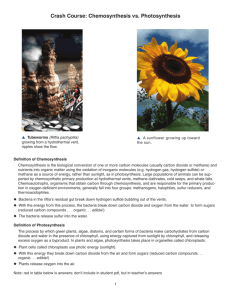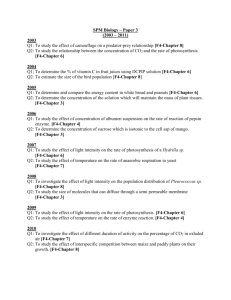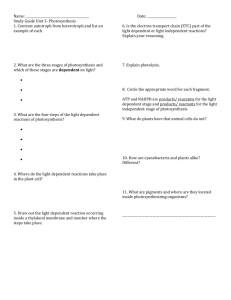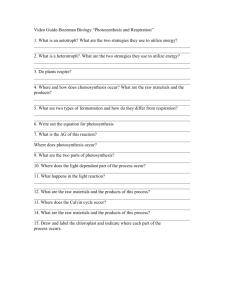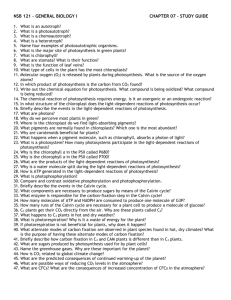Unit 7 - Enzymes and Photosynthesis
advertisement
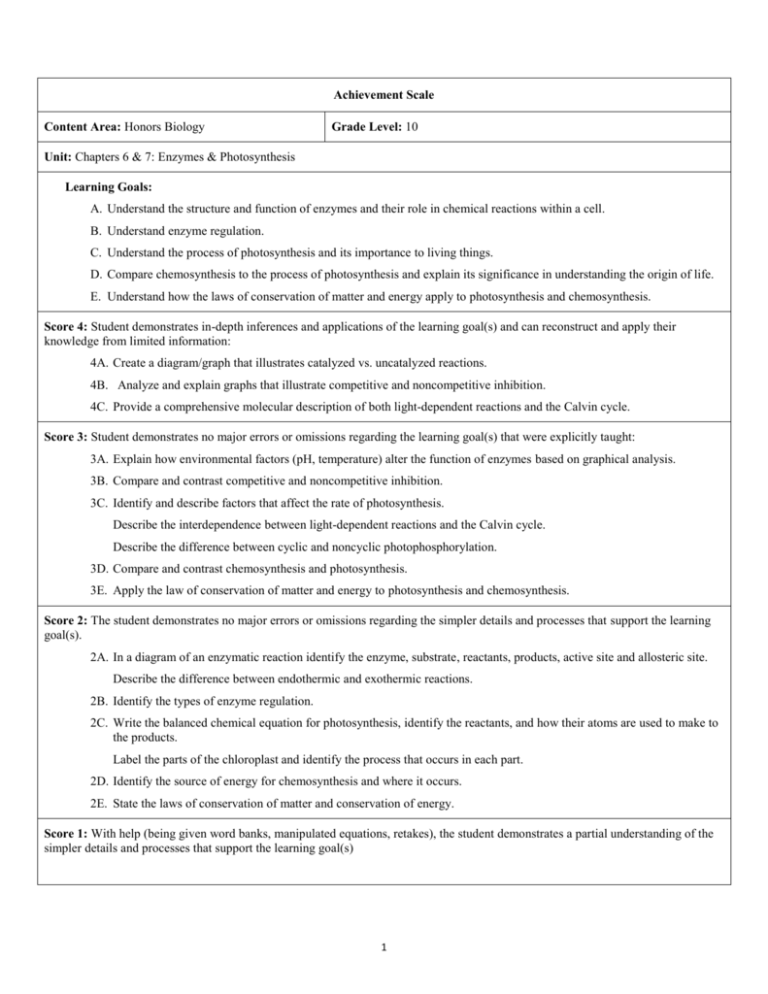
Achievement Scale Content Area: Honors Biology Grade Level: 10 Unit: Chapters 6 & 7: Enzymes & Photosynthesis Learning Goals: A. Understand the structure and function of enzymes and their role in chemical reactions within a cell. B. Understand enzyme regulation. C. Understand the process of photosynthesis and its importance to living things. D. Compare chemosynthesis to the process of photosynthesis and explain its significance in understanding the origin of life. E. Understand how the laws of conservation of matter and energy apply to photosynthesis and chemosynthesis. Score 4: Student demonstrates in-depth inferences and applications of the learning goal(s) and can reconstruct and apply their knowledge from limited information: 4A. Create a diagram/graph that illustrates catalyzed vs. uncatalyzed reactions. 4B. Analyze and explain graphs that illustrate competitive and noncompetitive inhibition. 4C. Provide a comprehensive molecular description of both light-dependent reactions and the Calvin cycle. Score 3: Student demonstrates no major errors or omissions regarding the learning goal(s) that were explicitly taught: 3A. Explain how environmental factors (pH, temperature) alter the function of enzymes based on graphical analysis. 3B. Compare and contrast competitive and noncompetitive inhibition. 3C. Identify and describe factors that affect the rate of photosynthesis. Describe the interdependence between light-dependent reactions and the Calvin cycle. Describe the difference between cyclic and noncyclic photophosphorylation. 3D. Compare and contrast chemosynthesis and photosynthesis. 3E. Apply the law of conservation of matter and energy to photosynthesis and chemosynthesis. Score 2: The student demonstrates no major errors or omissions regarding the simpler details and processes that support the learning goal(s). 2A. In a diagram of an enzymatic reaction identify the enzyme, substrate, reactants, products, active site and allosteric site. Describe the difference between endothermic and exothermic reactions. 2B. Identify the types of enzyme regulation. 2C. Write the balanced chemical equation for photosynthesis, identify the reactants, and how their atoms are used to make to the products. Label the parts of the chloroplast and identify the process that occurs in each part. 2D. Identify the source of energy for chemosynthesis and where it occurs. 2E. State the laws of conservation of matter and conservation of energy. Score 1: With help (being given word banks, manipulated equations, retakes), the student demonstrates a partial understanding of the simpler details and processes that support the learning goal(s) 1 ACADEMIC VOCABULARY Ch 6: Energy & Enzymes Chapter 7: Photosynthesis Metabolism Heterotroph Reactants Autotroph Products Photosynthesis Entropy Chloroplast Free Energy Chlorophyll Exothermic (Exergonic) Thylakoid Endothermic (Endergonic) Grana ADP/ATP Stroma Metabolic pathway Absorption spectrum Substrates Action spectrum Activation energy Carotenoids Reactants Photosystems I and II Product Non-Cyclic Photophosphorylation Enzyme Substrate Complex Cyclic Photophosphorylation Active Site Light-Dependent Reaction Catalyst Light-Independent Reaction (Calvin Cycle) Enzymes ATP synthase Denatured Chemiososis Enzyme inhibition Electron Transport Chain Allosteric site NADPH/NADP+ Feedback Inhibition RuBP Noncompetitive Inhibition RuBP carboxylase Competitive Inhibition Chemosynthesis Inhibitor/Repressor Activator/Effector 2

